
Small Molecule Drug Discovery
Methods, Molecules and Applications
- 356 pages
- English
- ePUB (mobile friendly)
- Available on iOS & Android
About This Book
Small Molecule Drug Discovery: Methods, Molecules and Applications presents the methods used to identify bioactive small molecules, synthetic strategies and techniques to produce novel chemical entities and small molecule libraries, chemoinformatics to characterize and enumerate chemical libraries, and screening methods, including biophysical techniques, virtual screening and phenotypic screening. The second part of the book gives an overview of privileged cyclic small molecules and major classes of natural product-derived small molecules, including carbohydrate-derived compounds, peptides and peptidomimetics, and alkaloid-inspired compounds. The last section comprises an exciting collection of selected case studies on drug discovery enabled by small molecules in the fields of cancer research, CNS diseases and infectious diseases.
The discovery of novel molecular entities capable of specific interactions represents a significant challenge in early drug discovery. Small molecules are low molecular weight organic compounds that include natural products and metabolites, as well as drugs and other xenobiotics. When the biological target is well defined and understood, the rational design of small molecule ligands is possible. Alternatively, small molecule libraries are being used for unbiased assays for complex diseases where a target is unknown or multiple factors contribute to a disease pathology.
- Outlines modern concepts and synthetic strategies underlying the building of small molecules and their chemical libraries useful for drug discovery
- Provides modern biophysical methods to screening small molecule libraries, including high-throughput screening, small molecule microarrays, phenotypic screening and chemical genetics
- Presents the most advanced chemoinformatics tools to characterize the structural features of small molecule libraries in terms of chemical diversity and complexity, also including the application of virtual screening approaches
- Gives an overview of structural features and classification of natural product-derived small molecules, including carbohydrate derivatives, peptides and peptidomimetics, and alkaloid-inspired small molecules
Frequently asked questions
Information
Synthetic approaches toward small molecule libraries
Abstract
Keywords
1.1. Introduction

| Name | Structure | Company | Biological effect |
|---|---|---|---|
| Encorafenib | 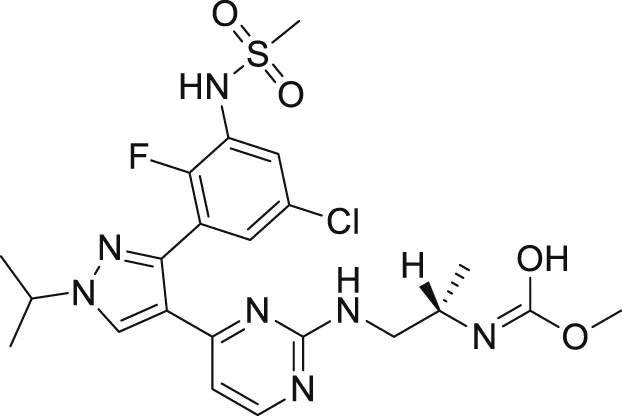 | Array | BRAF inhibitor. Used in combination with binimetinib for the treatment of BRAF-mutated melanoma |
| Binimetinib | 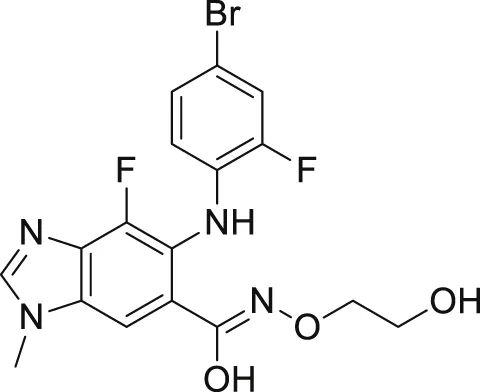 | Array | MEK1/2 inhibitor. Used in combination with Encorafenib for the treatment of BRAF mutated melanoma |
| Talazoparib | 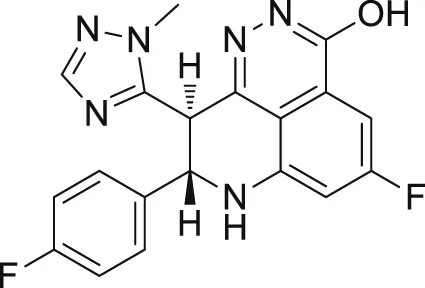 | Pfizer | Poly (ADP-ribose) polymerase type 1 and 2 inhibitor. Used in the treatment of BRCA-mutated HER2-negative breast cancer |
| Ivosidenib |  | Agios | Isocitrate dehydrogenase type 1 (IDH1) inhibitor. Used in the treatment of acute myeloid melanoma |
| Gilteritinib | 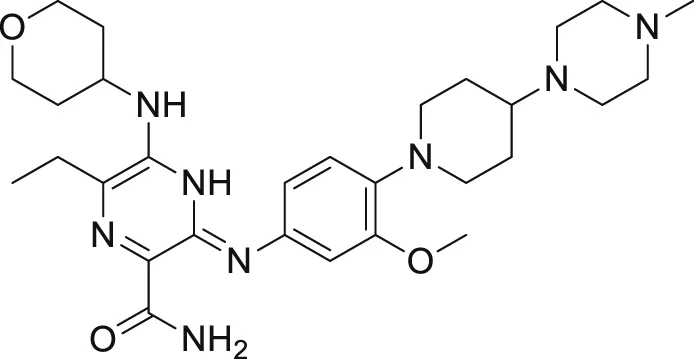 | Astellas | FLT3, AXL, and ALK kinases inhibitor. Used in the treatment of acute myeloid melanoma |
| Glasdegib | 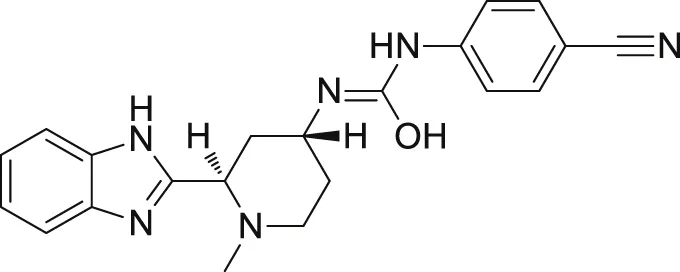 | Pfizer | Hedgehog (hh) signaling pathway inhibitor. Used in the treatment of acute myeloid melanoma |
| Duvelisib |  | Verastam | Phosphoinositide-3-kinase (PI3K) inhibitor. Used in the treatment of chronic lymphocytic leukemia or small lymphocytic lymphoma |
| Larotrectinib | 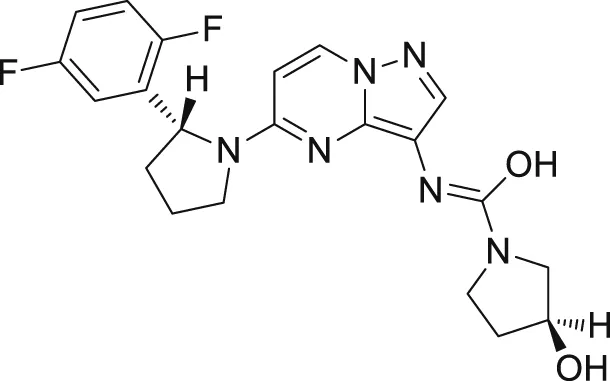 | Bayer and Loxo | Tropomyosin receptor kinase (TRK) A/B/C inhibitor. Used in the treatment of solid tumors that have the neurotrophic receptor tyrosine kinase gene fusion |
| Lorlatinib |  | Pfizer | ATP-competitive inhibitor of anaplastic lymphoma kinase (ALK) and c-Ros oncogene 1 (Ros)1. Used in the treatment of ALK-positive metastatic non–small cell lung cancer |
| Dacomitinib | 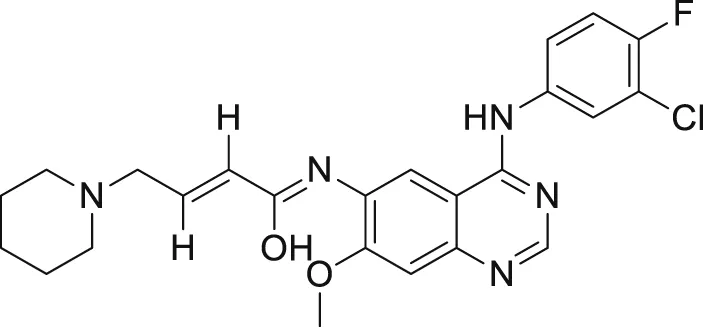 | Pfizer | Covalent ligand of human epidermal growth factor receptors Her-1, Her-2, and Her-4. Used in the treatment of metastatic non–small cell lung cancer |
| Apalutamide | 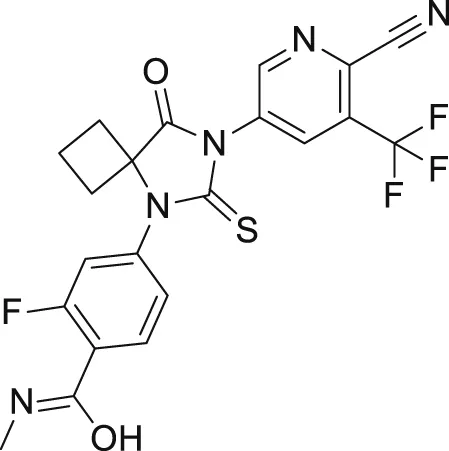 | Janssen | Androgen receptor (AR) antagonist. Used in the treatment of prostate cancer |
Table of contents
- Cover image
- Title page
- Table of Contents
- Copyright
- Contributors
- Foreword
- Preface
- Abbreviations
- Chapter 1. Synthetic approaches toward small molecule libraries
- Chapter 2. Chemical reactions for building small molecules
- Chapter 3. Chemoinformatics approaches to assess chemical diversity and complexity of small molecules
- Chapter 4. Virtual screening of small-molecule libraries
- Chapter 5. Screening and biophysics in small molecule discovery
- Chapter 6. Principles and applications of small molecule peptidomimetics
- Chapter 7. sp2-Iminosugars as chemical mimics for glycodrug design
- Chapter 8. Synthesis and biological properties of spiroacetal-containing small molecules
- Chapter 9. Centrocountins—synthesis and chemical biology of nature inspired indoloquinolizines
- Chapter 10. PPIs as therapeutic targets for anticancer drug discovery: the case study of MDM2 and BET bromodomain inhibitors
- Chapter 11. Discovery of small molecules for the treatment of Alzheimer’s disease
- Index

